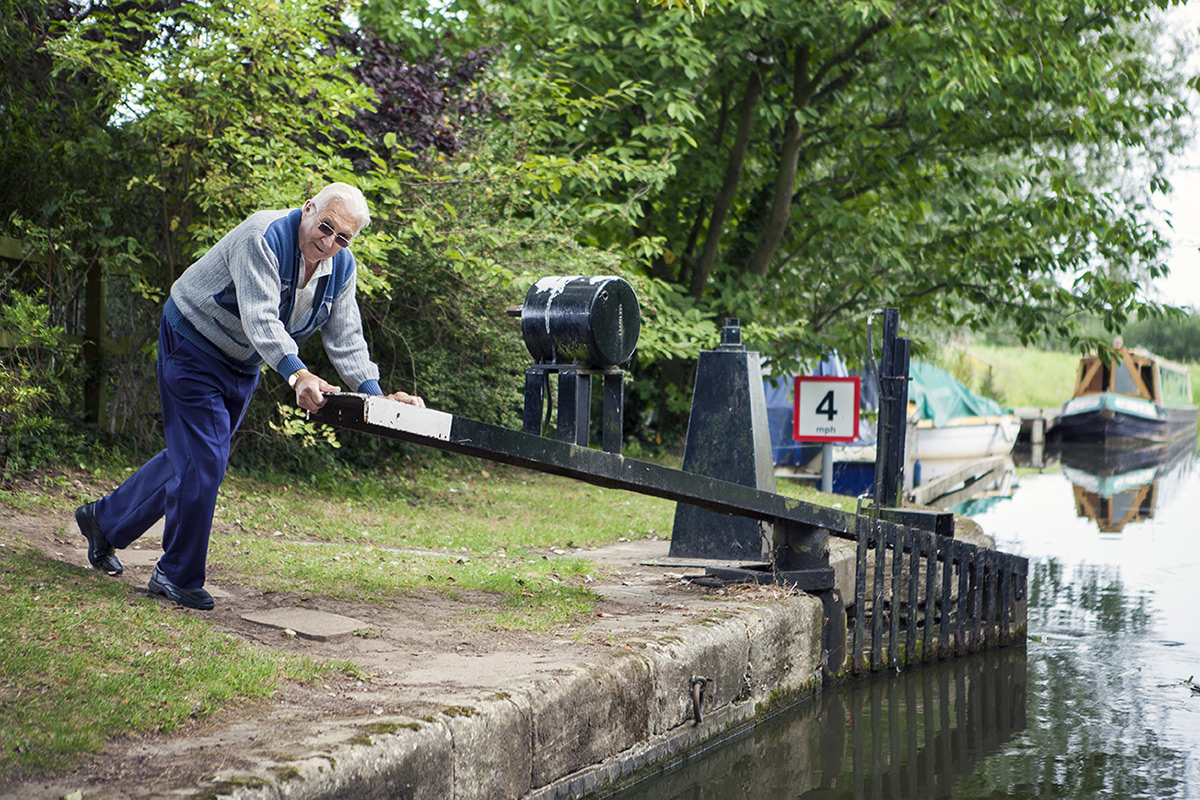
Are you new to canal boating?
Are you planning your first narrowboat holiday?
Are you wondering if locks are really complicated?
Don’t worry. These simple tips will ensure that your first canal boat cruise goes smoothly, and that you impress your crew with your amazing lock operating skills!
Before you set off on your first cruise, make sure the windlasses are somewhere that you can reach them easily. A windlass is an essential L-shaped tool that allows you to operate the locks. How to use a windlass will be part of the narrowboat handover process with our friendly staff, who will be happy to answer any questions you have about working a lock.
If this is your first time narrowboating you may be wondering if it is difficult to operate a lock, and how many people will need to be involved. For an experienced boater a lock can be navigated single handed, but we wouldn’t recommend that, if this is your first time boating. If you have booked a narrowboat holiday with us, we are assuming you are bringing along some willing and helpful family and friends. Ideally you will need one or two people to operate the lock, plus somebody to navigate the boat.
As you approach the lock you will need to nominate a steerer to be in charge of the tiller. This person will first be responsible for guiding the boat towards the bank, so that one or more crew members can carefully step onto the bank. You will need to temporarily moor the boat to the bollards provided at the lock landing, while you set the lock, ready for your boat to approach. A lock is a structure that allows a boat to travel uphill or downhill to another level of the waterway. However, some locks, such as Lodes End Lock on the Middle Level waterways, are all on one level: Even when there is no difference in levels, you must still ensure that all gates are closed behind you.
The lock gates are opened by pushing a balance beam. After you have opened one gate you will need to cross the lock to open the other one. There is usually a bridge to cross on. When both gates are open, the steerer can untie the mooring ropes and gently, slowly guide the bow into the lock. As soon as the front of the boat enters the lock you will want to put the boat into reverse gear to slow the boat down to a stop. You may like to throw a mid-rope over (going down a level) or up (if you’re going up) to a crew member standing on the lock-side. Warn everybody that locks can be deep and dangerous places; we suggest no running next to a lock. At the hire base before you depart, our instructors will explain how to use a windlass to open the paddles on the lock gates, which will either fill or empty the lock, depending on which direction you are travelling in. The currents caused by this can be surprisingly strong, so the boat can be held steady with a loose rope around a bollard, or by using the engine to pull the boat against the current.
When travelling downhill it is very important to note the cill marker – a painted line on the edge of the lock that will guide you to keep clear of an underwater ledge, which is not visible until the lock is almost empty. The boat must keep forward of this point to avoid being caught on the cill, which can quickly cause a boat to get stuck, tip at an angle and sometimes even sink. Things can go wrong in a lock very quickly, so be sure that everybody knows their role, and that any children are safe while you operate the lock. Finally, after the lock has been emptied or filled, the paddles can be wound down, and the gates are opened to allow your boat to leave the lock chamber.
Always close the gates of a lock behind you. This saves water, and prepares the lock for the next boaters approaching to use it. If you see other boaters around before using a lock it is considered polite to wait and share the lock; this also saves water. At busy locations you may even have to wait to use a lock.
Having read this article we hope you now feel confident enough to nominate yourself to operate the locks with your crew! You may also like to read: What’s it Like to Actually Steer a Narrowboat?
For more ideas to add to this year’s holiday plans, sign up for digital updates from this blog. (We never share or sell email addresses – your details are safe with us.) Just look for ‘Follow Blog’ in the sidebar on the right and get insider knowledge about the Fenland Waterways.
Image credit: Fox Narrowboats